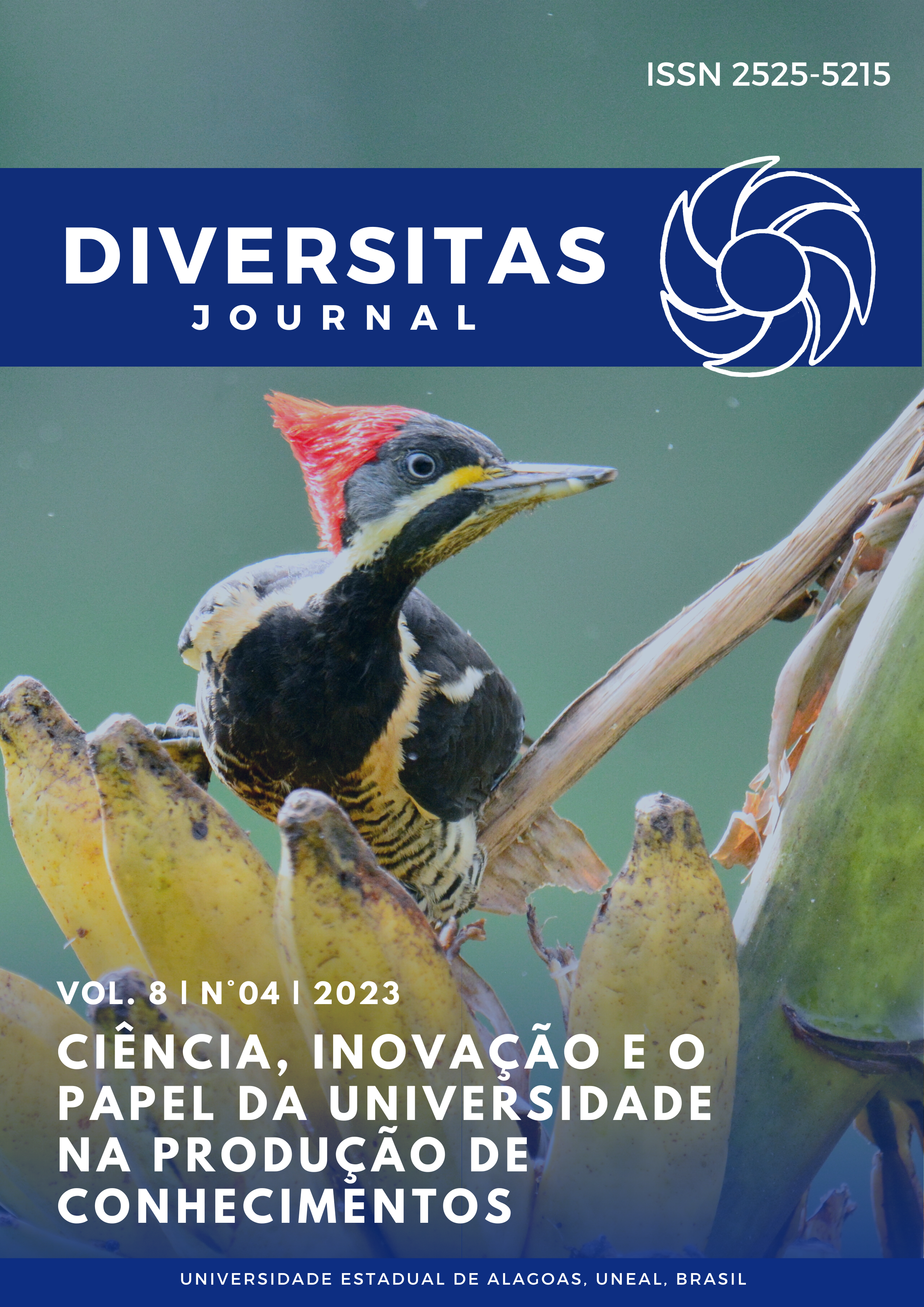Teaching Organic Chemistry
Starch Identification in Food
DOI:
https://doi.org/10.48017/dj.v8i4.2724Keywords:
Organic chemistry, starch, teaching, significantAbstract
This article highlights the importance of teaching Organic Chemistry to detect and understand starch in food. Starch is a complex carbohydrate essential for human nutrition. Teaching in this context enables students to comprehend the structure and properties of starch, as well as develop analytical skills for its identification. The article emphasizes pedagogical strategies such as practical experimentation and chemical tests like the iodine test to identify starch in food. Educational resources like virtual simulationsand practical activities are presented to aid in teaching and understanding starch. By combining theory and practice, students grasp how starch affects the texture, flavor, and nutritional value of food, as well as its significance in various industries. This multidisciplinary approach promotes connected learning, critical thinking, and the application of acquired knowledge. In summary, teaching Organic Chemistry related to starch provides a deep understanding of food chemistry and its impact on health andindustry. Active student engagement through practical approaches and innovative resources can enhance interest, motivation, and meaningful learning in this field.
Metrics
References
Cerri, F. (2012). Estudo para validação de modelo gás-solido em separação ciclônica de sais de iodo na indústria química. https://repositorio.ufsc.br/handle/123456789/94618
De Lima F, J. Da Silva, M. Barbosa, M. (2018) Contextualizando as aulas práticas de bioquímica de detecção ou não de amido, a partir da análise em tipos de queijos comercializados em municípios da Paraíba. In: Anais do III Congresso Nacional de Pesquisa e Ensino em Ciências (III CONAPESC), Campina Grande-PB. https://www.editorarealize.com.br/editora/anais/conapesc/2018/TRABALHO_EV107_MD4_SA16_ID9_26042018211722.pdf
Do Nascimento, M. Da Rosa, J. (2020). Princípio da sala de aula invertida: uma ferramenta para o ensino de química em tempos de pandemia. Brazilian Journal of Development, v. 6, n. 6, p. 38513-38525, https://ojs.brazilianjournals.com.br/ojs/index.php/BRJD/article/view/11816
Dos Santos, A. (2018). Prática 8: Reações Químicas. https://encr.pw/eV6G5
Fiori, R. Goi, M. (2020) O Ensino de Química na plataforma digital em tempos de Coronavírus. Revista Thema, v. 18, p. 218-242. https://doi.org/10.15536/thema.V18.Especial.2020.218-242.1807
Frade, M. (2016). Avaliação da função sudoral teste do iodo-amido (https://pesquisa.bvsalud.org/portal/resource/pt/una-3039)
Leal, R. Neto, J.(2013) Amido: Entre a ciência e a cultura. Química Nova na Escola, v. 35, n. 2, p. 75-78. https://l1nq.com/CmaD3
Lobo, A. Silva, G. (2013). Amido resistente e suas propriedades físico-químicas. Revista de Nutrição, v. 16, p. 219-226. https://doi.org/10.1590/S1415-52732003000200009
Schnetzler, R. (2022). A pesquisa em ensino de química no Brasil: conquistas e perspectivas. Química nova, v. 25, p. 14-24. https://www.scielo.br/j/qn/a/KFnNCTjJ73v88VvnS4hGRDc/?lang=pt
Silva, W. (2017). Materiais Didáticos inclusivos para o Ensino de Química: desafiando professores em formação. Encontro Nacional de Pesquisa em Educação em Ciências, v. (11). http://reec.uvigo.es/volumenes/volumen20/REEC_20_3_4_ex1867_628.pdf
Vollhardt, P. Schore, N. (2013). Química Orgânica-: Estrutura e Função.
Downloads
Published
How to Cite
Issue
Section
License
Copyright (c) 2023 Michele Barbosa de Oliveira, Paulo Henrique Almeida da Hora

This work is licensed under a Creative Commons Attribution 4.0 International License.
The Diversitas Journal expresses that the articles are the sole responsibility of the Authors, who are familiar with Brazilian and international legislation.
Articles are peer-reviewed and care should be taken to warn of the possible incidence of plagiarism. However, plagiarism is an indisputable action by the authors.
The violation of copyright is a crime, provided for in article 184 of the Brazilian Penal Code: “Art. 184 Violating copyright and related rights: Penalty - detention, from 3 (three) months to 1 (one) year, or fine. § 1 If the violation consists of total or partial reproduction, for the purpose of direct or indirect profit, by any means or process, of intellectual work, interpretation, performance or phonogram, without the express authorization of the author, the performer, the producer , as the case may be, or whoever represents them: Penalty - imprisonment, from 2 (two) to 4 (four) years, and a fine. ”


















